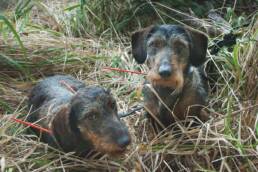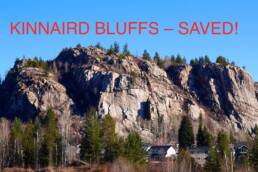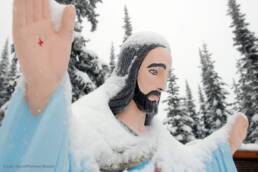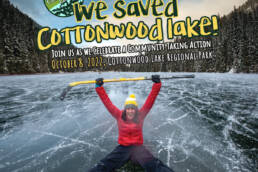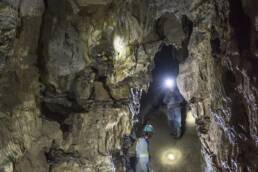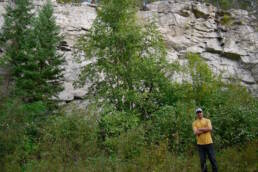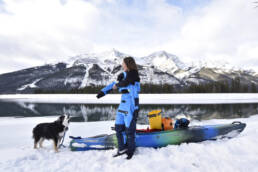Fifteen years ago, dachshunds and biologists teamed up to save Haida Gwaii from invasive species. This is what happens when wiener dogs attack.
Liberal hunting quotas and targeted culls are common ecosystem restoration tools. In British Columbia’s Haida Gwaii, after the Sitka Blacktail deer was introduced, another tool was needed to curb its population explosion, so biologists briefly enlisted an unlikely helper in its war: the dachshund. In typical late-1990s fashion, the diminutive wiener dog was briefly touted as an unlikely hero in the restoration of the “Galapagos of the North.”

Biologists have been wrestling with the ravages of introduced invasive species in Haida Gwaii for years. Raccoons and rats have decimated ground-nesting sea-bird colonies, beavers have dammed up rainforest rivers, and deer have literally eaten everything within reach, including the next generations of the culturally critical western Red Cedar. Even tiny, rugged Reef Island, six kilometres offshore and two kilometres square, has been colonized by swimming deer.
Wiener dogs were originally bred to flush out burrowing animals, such as badgers. Because their low frames allow easy passage through thick rainforest undergrowth, dachshunds helped herd the deer to waiting guns. On Reef Island, with initial help from the dogs, hunters bagged over 70 deer in three years.
Finnish biologist and hunter Reijo Orava and his two dachshunds were recruited for the Haida Gwaii project; however, their long-term involvement was thwarted by the wild Pacific coast, which pinned the team down on Reef for over a week in gale-force winds and cold rains, limiting the dog’s ability to hunt. Consequently, after just one hunt, authorities proclaimed the dachshunds results did not justify the costs, and their contract was not renewed. Dachshund involvement may have been short-lived, but the legend of the heroic wieners of Haida Gwaii lives on.
Dave Quinn
Born in Cranbrook, British Columbia, Dave is a wildlife biologist, educator, wilderness guide, writer and photographer whose work is driven by his passion for wilderness and wild spaces. His work with endangered mountain caribou and badgers, threatened fisher and grizzly, as well as lynx and other species has helped shape his understanding of the Kootenay backcountry and its wildlife, and help shape his efforts to protect what remains. His writing and photography has helped fill the pages of publications such as British Columbia Magazine, Westworld, the Financial Post, Backcountry, Adventure Kayak, as well as the Patagonia and MEC catalogs.
Related Stories
Exclusive – Kinnaird Bluffs Rock Climbing Area Saved!
The Mountain Culture Group has just learned that the Kinnaird Bluffs rock climbing area in Castlegar, British Columbia,…
Should Big Mountain Jesus Be Saved?
After 60-some years watching over his freeridin' flock, it looked as though the "Big Mountain Jesus" statue at…
“We Saved Cottonwood Lake” Celebration
The Cottonwood Lake Preservation Society is holding an event October 8, 2022 to celebrate saving the regional park from…
How Cody Caves Was Saved From Logging
They're dark, dank and older than the hills. Who wants to save a big ol' hole in the ground? The Cody Cves crew, that's…
Castlegar Rock Climbing Area To Be Saved From Development
A Kootenay rock climbing association has announced it's raised enough funds to purchase the most popular rock climbing…
Adventure Dogs: One Photographer’s Quest to Promote Adoption
Canmore resident Rachael Rodgers is using her popular Instagram account to promote the adoption of shelter dogs by…


